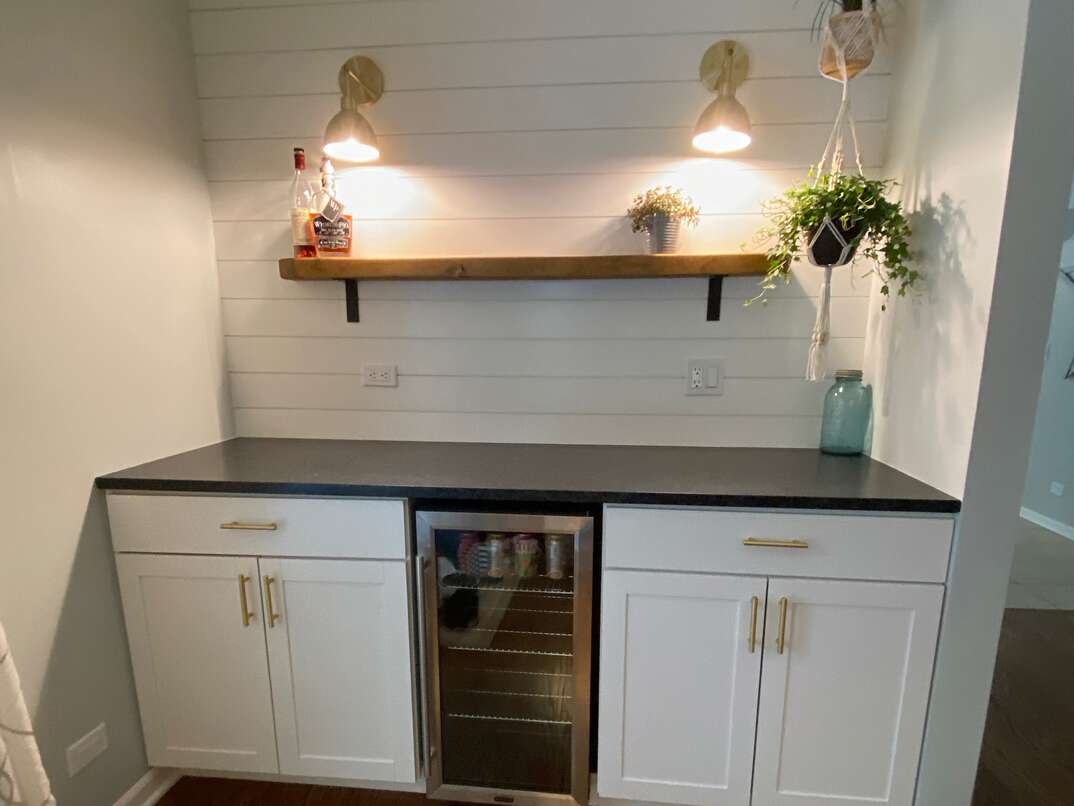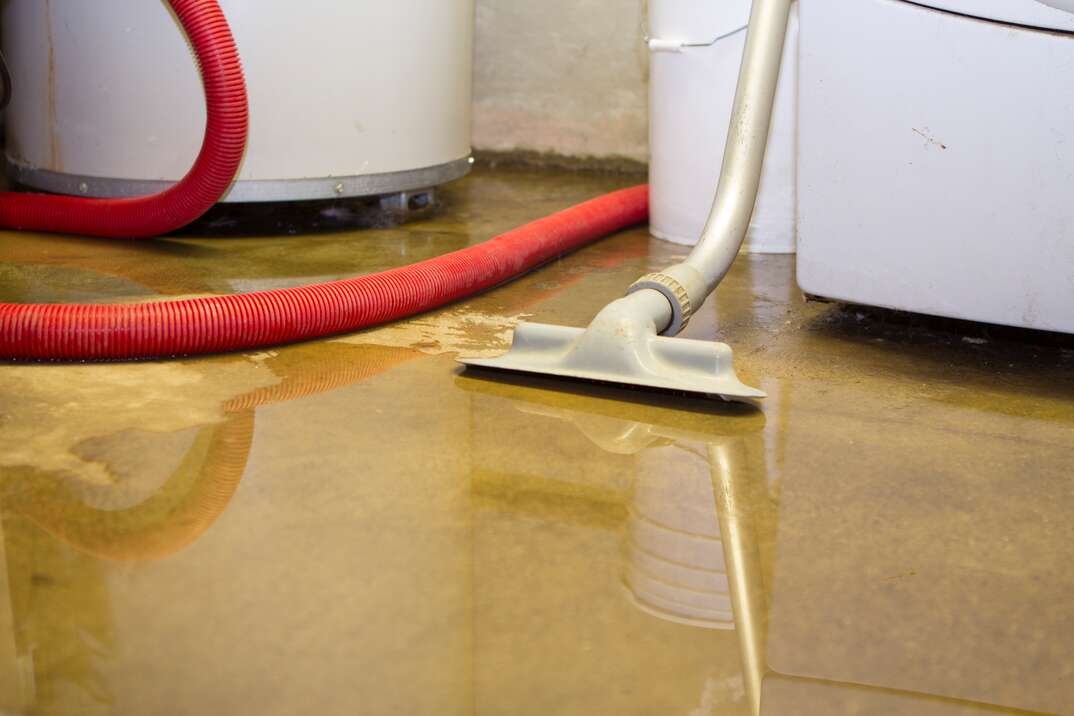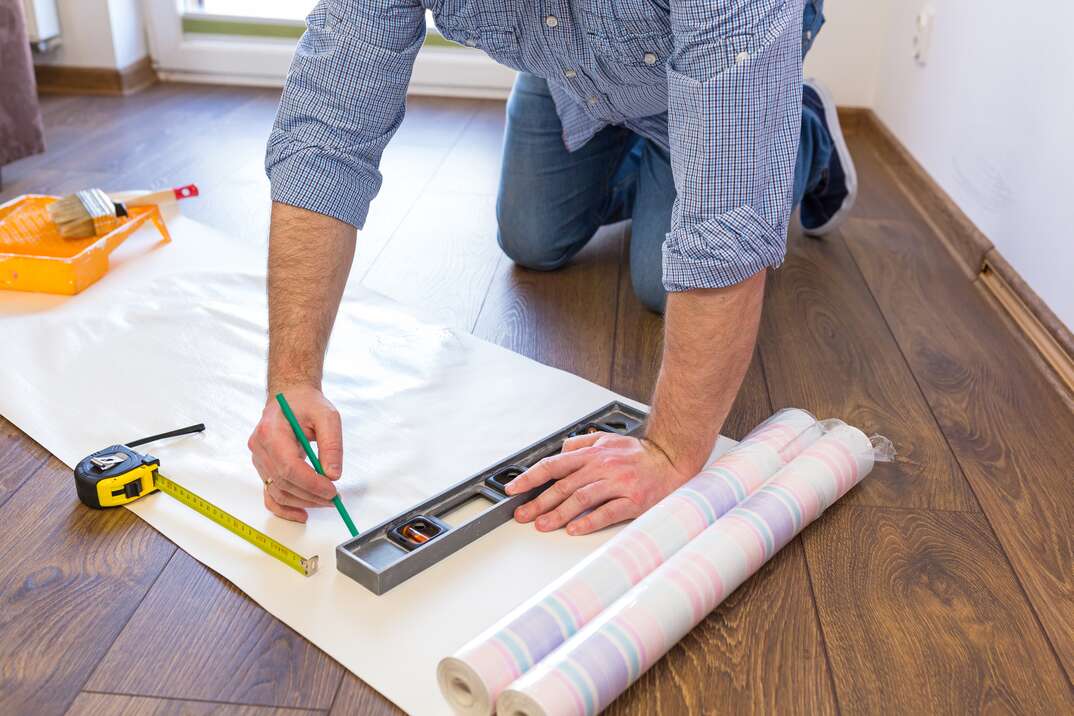How Much Does It Cost to Build a Dry Bar in Your Home?

Whenever you have an adult gathering, whether it’s game night or a dinner party, libations can liven up the occasion. With a dry bar on hand, you can stock up on your favorite boozy beverages to keep the good times rolling. Installing a bar is one of the best ways to utilize any unused section of wall space in your family room or in a corner of the basement.
This May Also Interest You: Build-A-Bar Workshop: How to Install a DIY Dry Bar
As with any home improvement project, costs are a major consideration. You can get a professional to install one for you, but that could cost up to $4,000. However, if you decide to go the do-it-yourself route, the costs start around $500 — meaning that, if you have some basic carpentry skills, you should seriously consider building one yourself. The major components you’ll need to put together a dry bar on a budget are a base cabinet, countertop, waterfall frame and mini-fridge.
Prefab Base Cabinets
A base cabinet is a perfect place to store bottles, board games and anything else you need for leisure-time fun. You can build a cabinet by yourself, but you can speed things along by purchasing a prefabricated unit that’s ready to install. Not long ago, you’d have had to work with a custom cabinet company to get your hands on one of these, but these days, you can find them at your nearest home improvement retailer. An unfinished two-door base cabinet made from plywood or particle board starts at about $120 (CAD 165) at The Home Depot, for example.
Unfinished cabinets are a popular choice for DIYers. Besides the cost-savings and simplification of the installation process, they allow you to get creative with the paint and wood staining options. You can create a truly unique look that matches your style or the room’s aesthetics. You can also glitz things up with hardware finishes of your choice.
Butcher Block or Granite Countertop?
Wood is seeing a resurgence in the home improvement scene since it seamlessly blends a traditional and modern look. It’s also warm to the touch and is easily the eco-friendliest material you can use. Butcher block is a common choice for countertops due to its stylishness and affordability. Depending on the type of wood used, you should expect a butcherblock countertop to cost you between $50 and $400 (CAD 70 and CAD 550) per square foot, according to data from Bob Vila.
As much as wood has its pros, it’s also prone to scratches, dents and stains — not to mention the fact that wood needs maintenance a few times a year to keep it in good condition. If you want something you can install and forget, you might want to consider a granite countertop. Granite, which is stone, can give your dry bar an elegant and luxurious look, as well as increase the value of your home. On top of that, it’s highly resistant to the sorts of dings and damage to which wood is not. It’s also resistant to heat. Meanwhile, it may surprise you to learn that the cost of a granite countertop, per square foot, is comparable to that of a butcher block countertop.
Granite and other stone countertops are not impervious to damage, however. They are especially vulnerable to chipping and etch marks. While wood can easily be sanded to cover up scratches and dents, damage to granite may need to be repaired by a professional, which can be expensive.
If you want a truly durable, yet affordable counter for your dry bar, consider a laminate product like Formica. While they might conjure memories of your parents’ dry bar from the 1970s, laminate countertops have come a long way in terms of looks and options — and, according to Thumbtack, will run you between $27 and $34 (CAD 37 and CAD 47) per square foot.
Plywood Waterfall Frame
A waterfall frame made from plywood is ideal for a project like this. Such a frame consists of an upside-down U-shape and can provide a framework in which to place your cabinet and mini-fridge, and atop which you would place your countertop. Alternatively, you could simply use a waterfall frame with shelving underneath and no cabinet — or you could forego the frame and use only the cabinet. According to Sawinery, you can get 1/4-inch-thick plywood at $6 to $25 (CAD 8 to CAD 34) per 4-foot by 8-foot sheet.
Mini-Fridge and Extra Costs
You might want some spirits, liquors and wines to be chilled before serving, which makes a mini-fridge essential to your dry bar. Obviously, this isn’t something you can build yourself, so a single-door mini-fridge costs around $80 to $500 (CAD 110 to CAD 690) on average, according to The Spruce.
You’ll also need to build a toe kick, which is a recessed space at the bottom of the base cabinet. It provides room for your toes, allowing you to stand closer to the dry bar. It also ensures that the base cabinet and fridge are level. A toe kick can easily be constructed from plywood.
Another extra cost to consider is installing an electrical outlet for the mini-fridge. Ideally, you’ll want to choose a wall that already has an outlet, but if that’s not the case, you’ll need to call in an electrician to come and install one for you. Forbes says this can cost you about $125 to $175 (CAD 170 to CAD 240).
DIY or Carpenter
If you want to save yourself time and energy, you can call in a professional carpenter to take the job off your hands. If you did it yourself, you’d only need to factor in the cost of acquiring the materials you need to build a dry bar, which is around $600 to $1,000 (CAD 825 to CAD 1370), based on data from Rogue Engineer.
But when you factor in the labor costs of a carpenter — which range from $35 to $90 (CAD 50 to CAD 125) per hour, according to Thumbtack — you’ll find yourself needing a bigger budget. You’re likely to spend anywhere between $2,000 and $4,000 (CAD 2,745 and CAD 5,490) — of course, on the other hand, you’ll be sure to have a professional, polished look once it is completed.
Keep in mind that poor design can cost you more in the long run — in repairs and replacements. And if you don’t really know what you’re doing, you can potentially injure yourself. That said, installing a dry bar, all told, is a relatively easy process that should take you a day or two to finish on your own.
All CAD conversions are based on the exchange rate on the date of publication.


